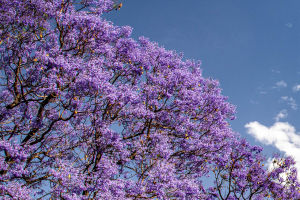Dig Bamboo
Bamboo likes to be warm and afraid of cold, with a growth temperature of 16-20°C. It has a shallow root system and weak drought resistance; it requires a moist environment and deep, loose, fertile, organic matter-rich, well-drained, and aerated soil.
Therefore, bamboo shoots are often found on hilltops and mid-slopes, where the forest is moist. Most bamboo shoots grow on mud, and some grow on the sand that fills the mountains.
In case of drought or severe cold, the soil has no fertilizer, and many pests and diseases, the bamboo forest is prone to bloom and die. White is the best color on the edge of the root, yellow is the second best, and green is inferior.
The first way to find bamboo shoots is to look for green whips, that is, to look for the underground stems of the bamboo exposed to the ground, which must be glowing green and green. The prerequisite, of course, is that the bamboo must be an adult.
The second way to look for asparagus is to look for asparagus based in the cave. In previous years, there will be a shot hole where the shoots were dug, and the chances of the shoots growing again where the shoots were dug are high.
So when you see a shot hole from previous years, you might want to keep an eye out for it, as there will likely be shoots.
The last method is to look at the forked branches of the bamboo. The underground whip is in the vertical direction of the forked branch, and you will find shoots at the 80 to 120 cm position of the underground whip. Using this method requires the bamboo to be strong and leafy. Usually, there are shoots at 40 to 50, and 50 to 60 centimeters.
Bamboo shoots can generally be selected to start digging around February to March, as soon as they emerge from the ground to prove that they are ready for digging, and the best specific time to dig is based on your needs.
For young bamboo shoots, the best time to dig is in February, when the bamboo shoots have just emerged and are fresh and tender, and the bamboo shoot rate is not as high as the mid-term bamboo shoots, so the phenomenon of receding bamboo shoots will occur, which makes it more important to dig.
The spring bamboo shoots that emerge in April are mostly large, robust, and vigorous, and it is generally not recommended to dig these types of bamboo shoots, which can grow into bamboo.
When digging bamboo shoots there are also the following tips
1. Judging the direction of the bamboo whip. Bamboo shoots all follow the bamboo whip. We can judge the direction of the bamboo whip based on the fact that the bottom section of the bamboo branch is parallel to the direction of the bamboo whip.
2. Judgment of whether there are bamboo shoots. The presence or absence of underground bamboo shoots is generally determined by the condition of the ground. If there are cracks in the ground, there is a good chance that there are bamboo shoots underneath the cracks. If there is a rise in the soil, the rise is likely to be the tip of the shoot. These are the key areas to check.
3. Be careful not to hurt the bamboo whip when digging. The best way to dig the bamboo shoot is to break the bottom of the bamboo shoot and the bamboo whip with a hoe and then take out the bamboo shoot, which is good for the bamboo whip. If a bamboo shoot is left in the ground, it will slowly decay and will be prone to the problem of the bad whip.


